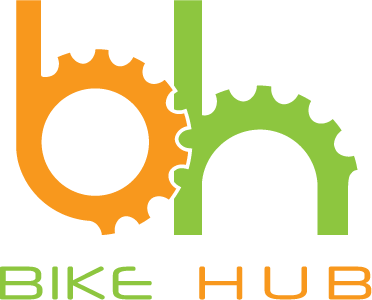Spinning is an indoor group cycling
exercise program that incorporates cardiovascular exercise, visualization and
heart rate training. It's not uncommon to find a triathlete spinning next to a
beginner in the same class. Although each ride is led by a spinning-certified
instructor who takes the class on a "journey" set to music, riders
can work at their own pace. A good instructor will encourage you to make the
workout your own and ride with your fitness goals in mind.
Step
1
Commit to attending four to five
spinning classes per week, if spinning is your primary cardiovascular exercise.
If you're a beginner, plan to work your way up to five classes per week within
five weeks, starting with two classes a week. It may take a few classes just to
get used to the bike's saddle.
Step
2
Buy a heart rate monitor. If the
fitness club or gym you're a member of loans them out for class, you can borrow
one each time you work out. Keep in mind that clubs usually have fewer monitors
than there are bikes in the spin studio and you might not get one every time.
Step
3
Calculate your maximum heart rate
(MHR). Use the age-predicted method when you're starting out by subtracting
your age from the number 220. If you're 35 years old, by this method, your MHR
is 185.
Step
4
Calculate your three heart rate
zones. Zone 1, the endurance zone, is fully aerobic at 65 to 75 percent of your
MHR. Multiply your MHR by 0.65 for the low end of the range; multiply it by
0.75 for the high end of the range. A person with a MHR of 185 would be
training in Zone 1 between heart rates of 120 and 139. Zone 2 contains the
anaerobic threshold, with a target heart rate of 80 to 85 percent of MHR. The
same person with a MHR of 185 would be working in this zone between the heart
rates 148 and 157. Zone 3 is where the body goes completely anaerobic at 86 to
90 percent of MHR, which is between 159 and 167 for the person whose MHR is
185.
Step
5
Spend approximately 80 percent of
your training time in Zone 1, the aerobic endurance-building zone. In this
zone, your body utilizes muscle glycogen and stored fat as its primary fuels.
Because you can breathe easily in this zone --- even carry on a conversation
--- your muscles receive all the oxygen they need to perform the work you
demand of them. For this reason, the muscles can source stored fat and convert
it to energy.
Step
6
Spend roughly 20 percent of your
training time in zone two, at or just below your anaerobic threshold. This will
improve your cardiovascular fitness faster and burn more calories. It's easy to
cross over the threshold, so watch your monitor and pay attention to your
breathing. At the anaerobic threshold, you should be able to say a few words
while breathing hard, whereas just beyond it, it's difficult to talk.
Step
7
Increase the time you spend just
below anaerobic threshold after you've lost weight and seem to have hit a
plateau. Aim to still spend at least 60 percent of your training time in Zone
1.
Step
8
Cross-train. For maximum effectiveness,
it's best to incorporate resistance training and flexibility work into your
exercise routine. In addition, performing at least one other type of cardio --
such as walking, running or swimming -- is advisable, even if spinning is still
your primary cardio exercise.
This article can be found at: http://www.livestrong.com/article/451347-how-do-i-spin-for-weight-loss/

